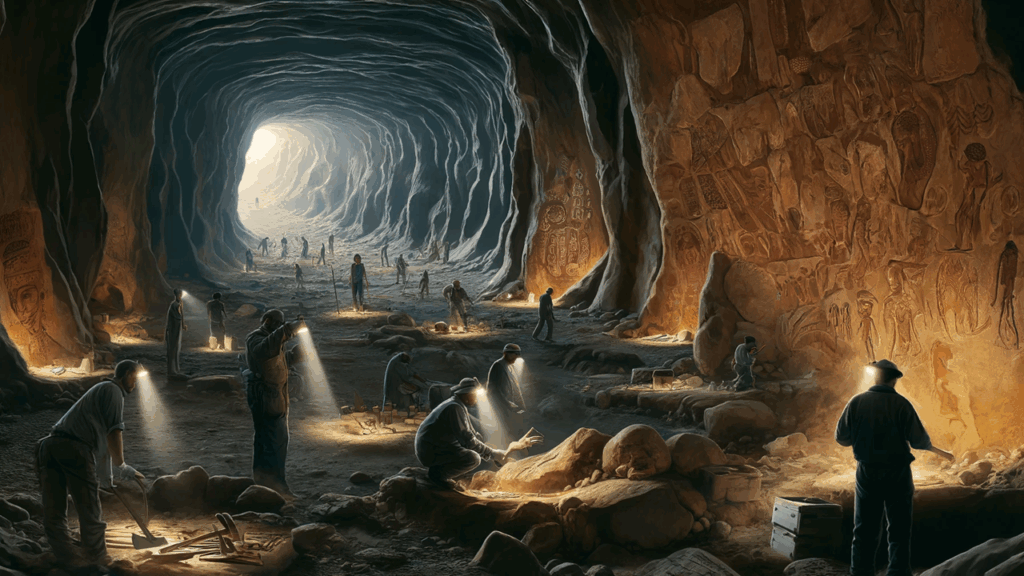1. Geological Genesis: The Fiery Birth of Arabia’s Lava Tubes

The Arabian Peninsula’s volcanic history is etched into its landscape, particularly in the Harrat Khaybar, a 14,000 km² volcanic field formed by millennia of eruptions. Umm Jirsan, one of its crown jewels, was formed during the Pleistocene age, when basalt lava flows flooded the region. As molten rock surged across the terrain, its surface cooled and solidified, forming a protective crust. Lava rivers still flowed under this crust, eventually draining to form an empty tunnel. Over time, sections of the roof collapsed, creating skylights that now illuminate the tube’s interior.
Comparative Geology:
Umm Jirsan isn’t the only lava tube hiding beneath the desert—it’s actually part of a larger underground network in the Harrat Khaybar region. This network also includes smaller but equally fascinating lava tubes like Bayt Al-Dabbagh and Al-Hashishiyah, all formed by ancient volcanic activity and waiting to tell their own stories. Unlike its counterparts, Umm Jirsan’s length (1.5 km) and structural integrity—featuring chambers up to 12 meters tall—made it uniquely hospitable. Its formation mirrors processes seen in Hawaii’s Kazumura Cave and Iceland’s Víðgelmir, though Arabia’s arid climate preserved its contents exceptionally well.
Tectonic Context:
The western Arabian volcanism is blamed on the Red Sea Rift where the African and Arabian plates are diverging. Magma rising through fissures created the Harrat volcanic fields, with eruptions occurring as recently as 1,000 years ago. This tectonic activity not only shaped the lava tubes but also influenced ancient human migration by creating resource-rich oases along fault lines.







